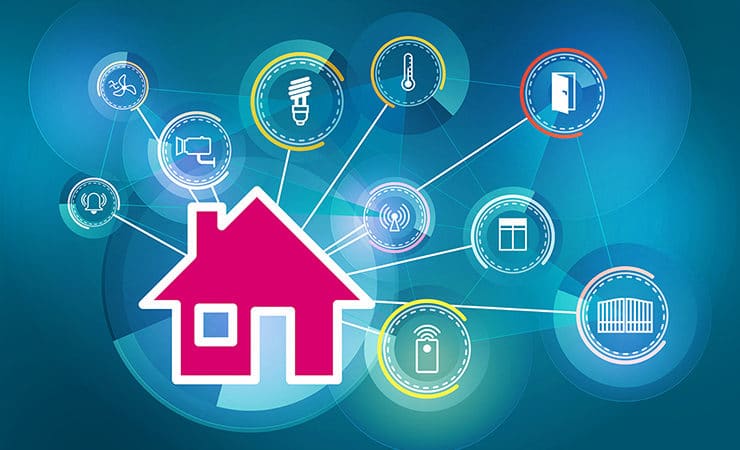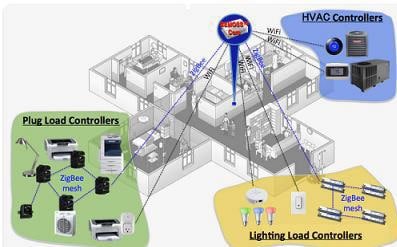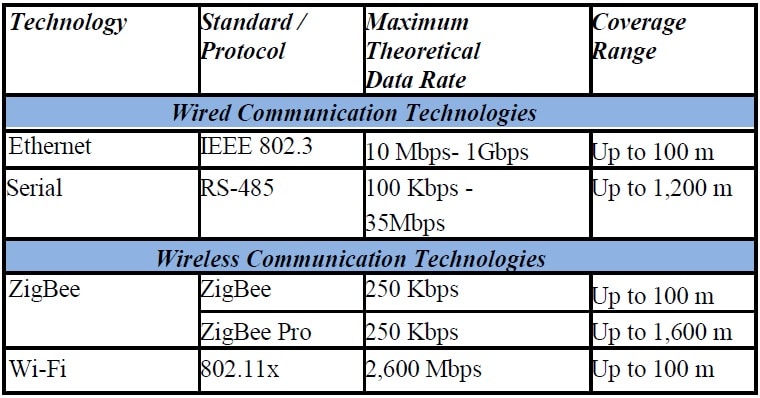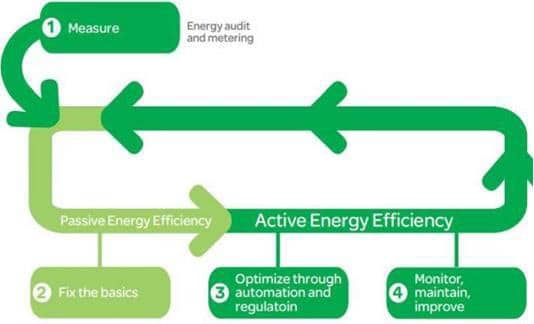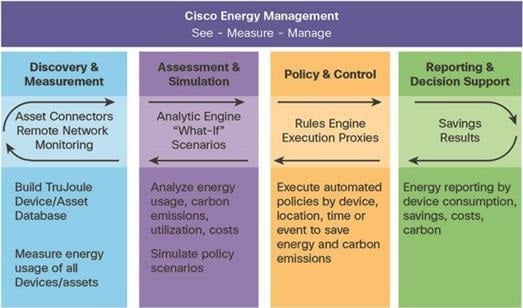Abstract
with an increasing need for reduction in energy consumption level and continuing growth of energy use by commercial buildings has created a need to develop innovative techniques to reduce and optimize building energy use. Recently Building Energy Management System (BEMS) have gained popularity because of increasing interest in building energy conservation and savings. Building Energy Management System has the ability to control and monitor the building’s energy needs. Building Energy Management System not only provides indoor thermal comfort but also creating a safe and healthy environment within residential buildings including institutional, commercial and industrial buildings and able to reduce energy consumption. In order to improve the overall energy efficiency and save electricity expenditure of the Building lead to electricity saving. The Objective of this paper is to review different methods or techniques suggested by the researchers for controlling and monitoring the energy consumption patterns in buildings. Additionally, it highlights various developed software in Building Energy Management System Especially BEMOSS (Building Energy Management Open Source Software) and also discuss benefits of Building Energy Management System.
INTRODUCTION
In recent years, the energy consumed in the buildings sector consists of residential and commercial end users is rapidly increasing. The share of energy consumption in building is approximately 20.1% of total delivered energy consumed worldwide and is expected to increases 1.5%/ year to 2040 [1]. The negative impact of increasing energy consumption become more evident with diminishing fossil fuels and accumulated greenhouse gases. Sometimes due to high demands at peak hours leads to blackouts in countries. India has faced the same blackout in August 2012 which leads to approximate 650 million people without electricity [2]. As a result, the need for developing a smart building energy management system becomes a necessity. Smart Building Energy Management system mean a system which provides a set of techniques to monitor and control a building’s energy needs with maintaining a good quality of living in building’s premises [3].Moreover, the objective of a typical Building Energy Management System is to optimize energy utilization, reduce energy cost and to improve environmental effects.
Building Energy Management System has the ability to control building’s electrical and mechanical equipment namely HVAC (heating, ventilating and air conditioning). For that it has become necessary to raise the awareness about the importance of giving people access to data surrounding there energy usage. Therefore, it is necessary to study the Smart Energy Management System to meet the increasing demand of electrical energy due to increasing population, urbanization, industrialization etc.
In this paper, we present a review on the different techniques and software that has been developed or developing for efficient Energy Management in building premises or in a home. This paper structured as follows: In section II, The related works regarding the various Building Energy Management Techniques have been discussed. In section III, a brief introduction about the software’s available in real world has discussed. In section IV, The various benefits of Building Energy Management System have been discussed. Finally In section V we concluded the work followed by the References.
BUILDUING ENERGY MANAGEMENT TECHNIQUES
With the advancement of technology, research has been carried out to improve the quality of living standards in building. In recent years, a lot of initiatives has been taken by the government of various countries (e.g., In the United States, Demand response is the strong business case for peak clipping), utility companies (e.g., General Electric, Google, Microsoft, cisco, etc.) and technology groups (e.g., industries, committees, alliance, etc.).Efforts are going on to design more new standards, protocols, communication technologies; web based services and so on for reducing the cost in real time as well as optimizing the energy usage. In [4] authors propose a smart home solution using PHP webserver and arduino microcontroller. Building Energy Management System can act as a bridge between the consumer side and the electric grid for implementing the demand response and makes the dream of smart grid visible.
For example, the author of [5] proposes an integrated solution to predict the user energy demand and help user to run their appliances in optimal run time so that consumer can actively participate in Demand Response and Time-of Use pricing.
In [6] Researchers proposed an in-home energy management system (iHEM) and optimization- based residential energy management (OREM) scheme whose aim is to reduce the energy expenses and peak loads. These schemes use communication technologies, wireless sensor home area network and energy management unit (EMU). Sergi Rotger-Griful, Ubbe Welling and Rune Hylsberg Jacobsen discussed a multi model Building Energy Management System especially for residential buildings. It enables both demand response provision and local efficient control. This model has been validated in a laboratory called Grundfos Dormitory Lab situated in Aarhus, Denmark [7]. While in [8] authors presented a coordination scheme editor for building management system. It is a web based device which continuously monitors and control energy use. Reference [9] discussed the main hardware components required to do the monitoring and controlling of end-use appliances.
The author of [10], proposed an intelligent HEM algorithm that helps to keep the household load below certain limit. It also helps to implement Demand Response. The authors developed a simulation tool that simulates the Demand Response program by using this algorithm. On the other hand, reference [11] focus on the Cyberenabled Efficient Building Energy Management System. BEMS provides the Building owner to actively participate in smart load control based on utility signals, customer’s preference and load priority. Various BEMS designed based on different wireless communication technologies such as ZigBee, Wi-Fi etc. and wired communication technologies such as Ethernet, Power line carrier etc. are also available.
BUILDUING ENERGY MANAGEMENT SOFTWARES
There are various software platforms available by which we can do energy monitoring and controlling in commercial and residential buildings. They are making easier for building managers or owners to access, understand and use all the data that can be collected from energy management system. Some open source software’s are available such as Freedomotic [12], Open Remote [13], and openHAB [14] etc. but these software are unable to implement Demand Response.
In [15], authors implemented a Software called Building Energy Management Open Source Software (BEMOSS) which improve sensing and controlling of equipment in small and medium sized buildings as well as it is very much capable to implement Demand Response.
- BEMOSS
BEMOSS is an open source software whose aim is to improve monitoring and controlling of electrical appliances in a small (<5,000 sqft) and medium (5,000- 50,000 sqft) sized commercial buildings. It also helps to reduce the energy consumption and to implement Demand Response very well [16].
- Pipattanasomporn, et al. Presented How we can successfully control and monitor major three loads in a building i.e. HVAC (e.g. RTU/VAV controller and smart thermostats), Lighting (e.g. Wi-Fi light switches and dimmable ballasts) and plug loads (e.g. Smart plugs) [17]. Besides of this it also capable to integrate with IoT devices
(IoT is the network of physical objects that can be monitored and controlled through the Internet [18]). It supports sensors (occupancy, light, temperature and humidity) and power/energy meters. The integration of controllers with BEMOSS is presented in Fig.1.In this architecture, only one single-board computer (e.g., an Odroid) with the BEMOSS is sufficient to do monitoring and controlling of all load controllers in the building.
Fig. 1. BEMOSS system architecture for commercial buildings
1) Communication Technologies supported by the BEMOSS:
There are various communication technologies supported by the BEMOSS software. It can either be wired technologies, like: Ethernet, Power Line Communication (PLC) and serial (RS-485); or wireless, like: Zwave, Wi-Fi, ZigBee and EnOcean. Currently, communication technologies supports by the BEMOSS as follows: Ethernet (IEEE 802.3), Serial (RS-485), ZigBee (IEEE 802.15.4) and Wi-Fi (IEEE 802.11), as summarized in Table I.[19]
TABLE I. COMMUNICATION TECHNOLOGIES SUPPORTED BY BEMOSS
2) Data Exchange Software supported by the BEMOSS:
TABLE II. DATA EXCHANGE SOFTWARE SUPPORTED BY BEMOSS
BEMOSS is software which provides multiple features [21] like- Economical, Open Source Architecture, Interoperable, Scalable, Robustness, Plug and Play, Secure, Local/Remote monitoring and so on.
- EcoStruxure Building Expert
EcoStruxure Building (Formerly known as SmartStuxure Lite solution) Expert which is a fast, easy way to monitor and control small- to medium – sized building using a no-license-fee web interface and wireless technologies[22]. “EcoStruxure is an integrated system architecture designed in order to control, supervise, and manage the total enterprise performance”. D. Mora, M. Taisch, A.W. Colombo discussed EcoStruxure Methodology [23], in a form of four step life cycle process as shown in fig.5. Researchers emphasize on the controlling of three loads majorly HVAC’s, lightning and metering which can cover approximately 56-81 % of your building’s energy use. The Heart of the EcoStruxure Building Expert is multipurpose management devices (MPM) that interface programmable controller, gateway, and web server duties in a single device. The MPM hosts EcoStruxure Building Expert, so no special gateway or server is needed, thereby providing the lowest cost per location for small and medium buildings. Consequently, [24] proposes different benefits and features of using EcoStruxure such as: scalability, open-access, cheaper, monitoring, controlling, multi-purpose manager, interfacing with sensors etc.
Fig. 2. Four Step Life Cycle Process
This system architecture approaches mainly for five domains such as: Building Management, Power Management, Process & Machine Management, IT Room Management and Security Management [25].
Protocols and Standard supported by the EcoStruxure:
These are the protocols and standard by which we successfully interface the various electrical appliances (HVAC’s, lighting etc.) with the EcoStruxure web.
- BACnet: It is the communication protocols for building automation and control. It control and monitoring the electrical appliance such as HVAC’s, lighting control etc.
- Modbus: It is the serial communication protocol introduced by ModiCon.
iii. oBIX: oBIX stands for Open Building Information Exchange. It is a standard for Web Service based interfaces for building automation.
- CANbus: Its stand for Control area network and it is used to interface between microcontroller and connected devices without any gateway.
- ZigBee: It is a high level communication protocol used for personal area networks. It is based on standard IEEE802.3.
- EnOcean: It is a power harvesting wireless technology used mainly for building automation.
- Cisco Energy Wise Suit
The Cisco Energy Wise Management suit [26] is a family of products and services that help customers who want to reduce energy cost and optimize the use of energy in their offices, building or home. This software provides continuous energy usage, provides advanced energy analytics and help to reduce energy cost. This software has the number of features some are as follows: Energy visibility, immediate savings, Powerful analytics and Reporting, alerting capabilities etc. There are four major functions of Cisco
Energy Management Suit [27].
1) Discovery and measurement: It automatically discovers the network connected devices, system etc.
2) Assessment and simulation: Analyse energy usage, carbon emission, temperature, humidity etc.
3) Policy and control: After analysing the energy usage it executes various policies and control commands.
4) Reporting and Decision support: finally delivers comprehensive report.
Fig. 3. Four Major Functions of Cisco Energy Management Suite
- BENEFITS OF BUILDING ENERGY MANAGEMENT SYSTEM
The authors of [28] discuss the benefits of Building Energy Management System:
- Minimize Wastage of Energy
Real time energy monitoring and controlling makes energy saving feasible. The main motive is not to reducing the use of Lighting ,HVAC’s or any other electrical appliances but it emphasize and help to use a electrical appliance in an intelligent way for example according to the demand levels , occupancy, light level, humidity level, time of day, temperature etc.
- Eco-Friendly
As climate change becomes an increasingly real concern, increasing emission of greenhouse gases has become a threat to all over the world. So when we talking about the Green Home or Green Building it means ‘It is a practice of creating structures and using process that are environmentally responsible and resource- efficient’.
By using Building Energy Management System which helps to monitor energy usage (e.g., heat, light, and power in buildings) and by offering a suggestion to cut down a CO2 emissions, a primary cause of global warming we can successfully achieve this target.
- Peace of Mind
Besides energy savings, it also gives peace of mind. The user does not need to turn off and on the electrical appliances all the time. They automatically turn on and off according to the requirements. BEMS tracks energy consumption patterns 24 hours a day and alerts to the users when they are away from the building.
- Provides Demand response solutions for renewable energy installations
By the years, every country is adopting the renewable energy resources because of the two major reasons first is cheaper and second is depletion of non- renewable resources. So for that purpose also BEMS helps a lot it helps to implement Demand Response Program, making it simpler for software companies to interface with BEMS in smart buildings [29].
- Reduce Cost
As the BEMS system continuously monitors and control the energy usage.it automatically reduces the electricity bill.
- Comfort
As BEMS controls the condition like temperature, lighting, air quality, ventilating, humidity etc. It makes the environment more comfortable and relaxing for the employees.
- CONCLUSION
In this paper we reviewed various technologies proposed by the researchers in the past years and also discussed some software (e.g. BEMOSS etc.) available in the market to improve the sensing and controlling of the appliances in the building. They can do energy saving up to 10-35% approximately. According to the presented literature survey, the main role of Building Energy Management System is to optimize the energy usage, provide the healthier environment in the premises and shift the user approach from “always on” to “when needed”. Hence, it can be concluded that we can do energy management in a building or a home efficiently and economically by using different types of software and technique as discussed.

